NASA Langley: The Story Behind the Science
The Virginia Air and Space Science Center is also the official visitor center for NASA Langley Research Center, a cornerstone of American aerospace history. Originally established in 1917 as the National Advisory Committee for Aeronautics (NACA), Langley played a critical role in aeronautical research long before the birth of NASA.
As the space age dawned, Langley transitioned from focusing solely on aviation to pioneering research in spaceflight. During the Mercury, Gemini, and Apollo missions, Langley researchers contributed to spacecraft design, atmospheric reentry research, and astronaut training — including simulator work at the Lunar Landing Research Facility.
A pivotal force behind many of these achievements was a group of highly skilled African- American women mathematicians, later celebrated in the book and film Hidden Figures. These human computers — including Katherine Johnson, Dorothy Vaughan, Mary Jackson, and Christine Darden — performed complex calculations that supported orbital trajectories and reentry paths. Their groundbreaking work helped launch John Glenn into orbit and laid the mathematical foundation for Apollos Moon landings. Langleys contributions were vital to achieving President John F. Kennedy’s 1961 challenge to land a man on the Moon and return him safely to Earth by the end of the decade. From spacecraft testing to mission planning, Langleys expertise helped make the Moon landing a reality in 1969.
Today, NASA Langley remains a leader in aerospace innovation — advancing research in supersonic flight (like the X-59 QueSST), Mars exploration, climate science, autonomous flight systems, and next-generation materials. Over a century since its founding, Langley continues to shape the future of air and space exploration.
